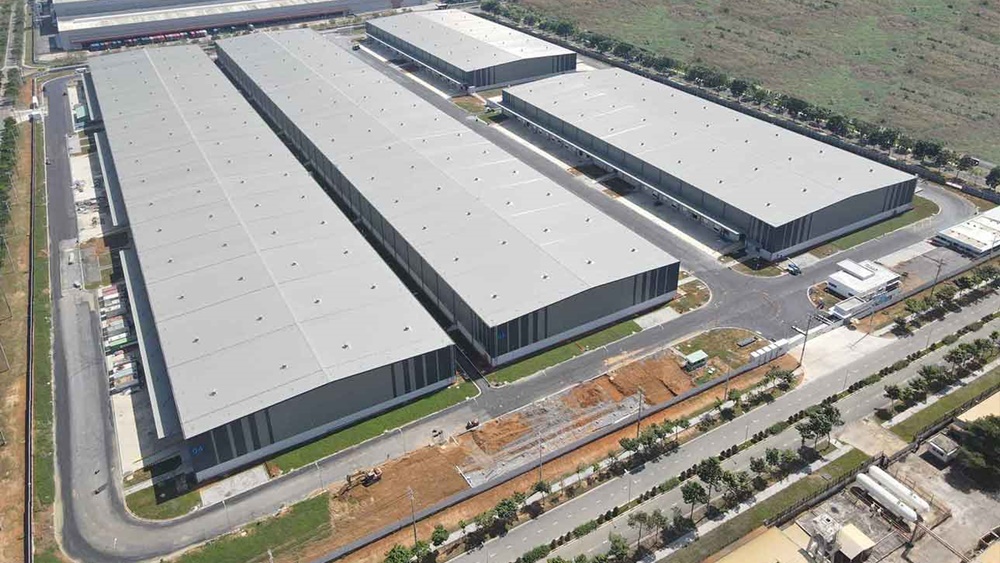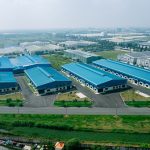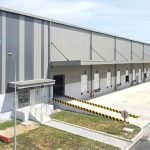Table of Contents
- 1 How to Rent a Factory in Vietnam: The Ultimate Guide for Businesses
- 1.1 Step 1: Research the Best Locations for Renting a Factory in Vietnam
- 1.2 Step 2: Understand the Legal Process for Renting a Factory in Vietnam
- 1.3 Step 3: Evaluate Rental Prices and Negotiate Terms
- 1.4 Step 4: Finalize the Lease Agreement
- 1.5 Step 5: Prepare the Factory for Operations
- 1.6 Step 6: Register Your Business and Obtain Necessary Licenses
- 1.7 Step 7: Begin Operations and Maintain Compliance
- 1.8 Conclusion
How to Rent a Factory in Vietnam: The Ultimate Guide for Businesses
This step-by-step guide will walk you through everything you need to know about renting a factory in Vietnam, from choosing the right location to finalizing the lease agreement and getting your factory up and running. Whether you’re considering renting industrial property in Ho Chi Minh City, Hanoi, or any of Vietnam’s other industrial hubs, this guide covers all the essential steps for a successful factory lease.
Step 1: Research the Best Locations for Renting a Factory in Vietnam
1.1. Factory Size and Layout Requirements
The first step in renting a factory in Vietnam is determining the size and layout of the factory that best suits your business needs. The size of the facility should be determined by your production volume, type of manufacturing, and any specialized requirements. For instance, if you are planning to use heavy machinery, you’ll need ample floor space and possibly reinforced flooring. If your business requires specific areas for storage, office space, or even staff accommodations, make sure to factor these needs into your search.
Some additional considerations include:
-
Production Lines: Are you planning on having dedicated production lines?
-
Warehouse Space: How much storage will you need for raw materials and finished goods?
-
Office Areas: Do you need space for administrative staff or management?
-
Specialized Needs: Does your business require specific facilities like high ceilings, ventilation systems, or cooling equipment?
1.2. Location Considerations
Choosing the right location is crucial to the success of your factory operations. When evaluating locations for renting a factory in Vietnam, consider:
-
Proximity to Transportation Hubs: Access to major roads, highways, ports, and airports is vital for efficient logistics and transportation of goods.
-
Access to Suppliers and Labor: Ensure the location is close to your suppliers and skilled labor pools. Major industrial regions like Ho Chi Minh City, Hanoi, Binh Duong, Hai Phong, and Bac Ninh are popular for their established supply chains and labor forces.
-
Industrial Zones and Economic Zones: Industrial parks and economic zones in Vietnam provide key advantages like tax incentives, well-developed infrastructure, and ready-to-lease facilities. You can choose from well-known industrial parks like VSIP, Long An, or Tan Tao Industrial Park.
1.3. Types of Properties Available
You can choose between various types of industrial property based on your business requirements:
-
Ready-Made Factories: These are ideal if you need to start operations quickly.
-
Industrial Land: If you need a custom-built factory, consider leasing industrial land and constructing your own facility.
-
Warehouse and Distribution Centers: If you need storage or a logistics center, many properties are available in industrial zones catering to warehousing.
Step 2: Understand the Legal Process for Renting a Factory in Vietnam
Renting industrial property in Vietnam involves navigating the country’s legal framework and understanding key regulations that apply to factory leasing.
2.1. Industrial Parks and Economic Zones
Many businesses choose to lease factories within established industrial parks or economic zones due to the advantages they offer. These areas are specifically designed to support industrial operations, with prebuilt facilities and comprehensive infrastructure in place. Some of the most popular industrial parks in Vietnam include:
-
VSIP Industrial Parks: Located in cities like Binh Duong, Hai Phong, Bac Ninh, and Hanoi, VSIP parks provide state-of-the-art facilities and offer tax incentives and other benefits for foreign investors.
-
Long An and Tan Tao Industrial Parks: Located near Ho Chi Minh City, these parks provide attractive rental rates and easy access to the city’s logistics infrastructure.
-
Hai Phong Economic Zone: Located in the north, this port city is ideal for companies needing quick access to international trade routes.
2.2. Regulatory and Tax Incentives
Vietnam offers a number of incentives to foreign investors, especially those operating in designated industrial parks and economic zones. These incentives may include:
-
Tax Breaks: Reduced corporate income tax rates or exemptions for specific periods.
-
Customs Duty Exemptions: Certain goods and equipment imported for factory setup may be eligible for duty exemptions.
-
Reduced Rent: Many industrial parks offer competitive rental rates and additional cost-saving measures.
Before you commit to renting a factory, make sure to research the specific benefits available for each industrial park.
2.3. Infrastructure and Utilities
Ensure the industrial park or property you’re considering has reliable infrastructure, including:
-
Electricity and Water Supply: Critical for factory operations, especially in manufacturing processes.
-
Waste Management: Factories need to comply with environmental standards, so check that the facility offers adequate waste disposal and treatment services.
-
Telecom and Internet Connectivity: Communication infrastructure is essential for managing operations and maintaining efficient contact with suppliers, customers, and employees.
-
Transportation Links: Verify that the location provides good access to highways, ports, and airports for efficient logistics.
Step 3: Evaluate Rental Prices and Negotiate Terms
3.1. Online Listings and Real Estate Platforms
To begin your search for a factory in Vietnam, you can use local real estate platforms such as Batdongsan.com.vn, VnProperty, and specialized industrial property websites to browse available listings. These platforms provide detailed information about properties, including rental rates, sizes, and available amenities.
3.2. Working with a Real Estate Agent
A local real estate agent specializing in industrial properties can help you navigate the leasing process. They can assist in identifying properties that meet your requirements, arranging property visits, and negotiating favorable terms on your behalf.
3.3. Property Visits and Inspections
Once you’ve shortlisted potential properties, it’s essential to conduct on-site inspections. Pay attention to the following factors:
-
Factory Condition: Check the building’s structural integrity, including floors, walls, ceilings, and roofing.
-
Security: Ensure the factory is secure and that there are no immediate safety concerns.
-
Surrounding Environment: Consider the local environment, including access to roads and public transportation.
Step 4: Finalize the Lease Agreement
4.1. Lease Duration and Rent Terms
Factory leases in Vietnam typically range from 3 to 10 years. The lease term you choose will depend on your business strategy and whether you’re looking for flexibility or long-term stability. Common rental rates range from $3 to $8 per square meter per month, depending on the location and type of property.
Ensure you understand the terms, including:
-
Payment Schedule: Most leases require quarterly or annual payments.
-
Rent Inclusions: Clarify what is included in the rent (e.g., utilities, maintenance fees) and what additional costs you may incur.
4.2. Legal Review and Negotiation
Before signing the lease, have a bilingual lawyer or legal consultant review the contract to ensure the terms are fair and legally binding. Ensure the lease covers important conditions such as:
-
Rent Escalation Clauses: Determine if the lease includes annual rent increases.
-
Termination Clauses: Understand the penalties or conditions for early lease termination.
-
Modification Clauses: If you need to make modifications to the factory, ensure the lease allows it.
Step 5: Prepare the Factory for Operations
5.1. Renovation and Setup
If the factory space requires modifications or upgrades, make arrangements for renovations before moving in. This may include:
-
Installing Machinery: Set up production equipment, machinery, and other necessary infrastructure.
-
Office Setup: Prepare office spaces for administrative functions.
-
Safety Measures: Ensure that the factory meets local health and safety regulations, including fire safety measures and emergency exits.
5.2. Utilities Setup
Verify that essential utilities such as electricity, water, internet, and waste management systems are set up and functioning before beginning operations.
5.3. Hiring Local Staff
Recruitment is a critical part of setting up operations. Consider working with local labor agencies or hiring directly to fill key positions, including production workers, supervisors, and administrative staff.
Step 6: Register Your Business and Obtain Necessary Licenses
6.1. Business Registration
Register your business with the Department of Planning and Investment in Vietnam. This process will vary depending on the type of business you are operating.
6.2. Permits and Licenses
Ensure that you obtain any necessary licenses for manufacturing, such as:
-
Environmental Permits: If your factory has significant environmental impacts, you may need specific permits.
-
Labor Compliance: Ensure compliance with Vietnam’s labor laws.
-
Tax Registration: Register your business for tax purposes with local authorities.
Step 7: Begin Operations and Maintain Compliance
7.1. Start Manufacturing
Once the factory is set up, machinery is installed, and staff is hired, you can begin production. Monitor your processes closely to ensure they meet your quality standards and production targets.
7.2. Stay Compliant
Ensure you stay compliant with local regulations, including:
-
Tax Compliance: Regularly report taxes and financial statements.
-
Labor Laws: Stay updated on labor laws, including wages, benefits, and working conditions.
-
Environmental Standards: Maintain compliance with environmental regulations to avoid penalties.
Conclusion
Renting a factory in Vietnam is an exciting opportunity, but it requires careful planning and thorough research. By following this comprehensive step-by-step guide, you can ensure a smooth and successful factory leasing process. From choosing the right location and understanding legal requirements to negotiating favorable lease terms and ensuring compliance, each step plays a crucial role in setting up a successful manufacturing operation in Vietnam.
With the right preparation and support, your factory rental experience in Vietnam will set the stage for long-term success in one of Southeast Asia’s most dynamic and rapidly growing markets.
For detailed inquiries and site visits, contact Lusac Real today!
📞 Phone: +84-903-009-609
📧 Email: [email protected]
🌐 Website: https://www.lusacreal.com/



